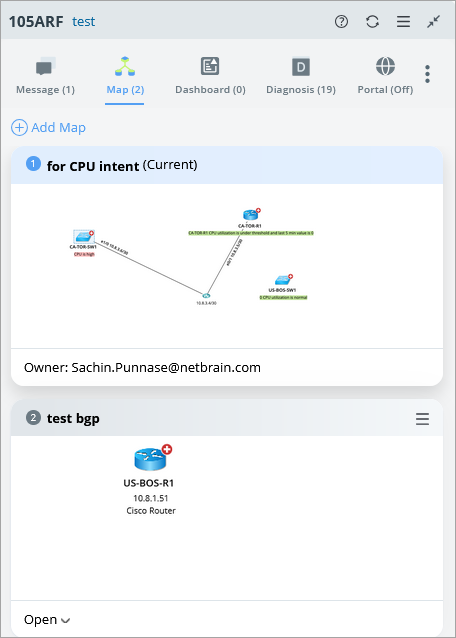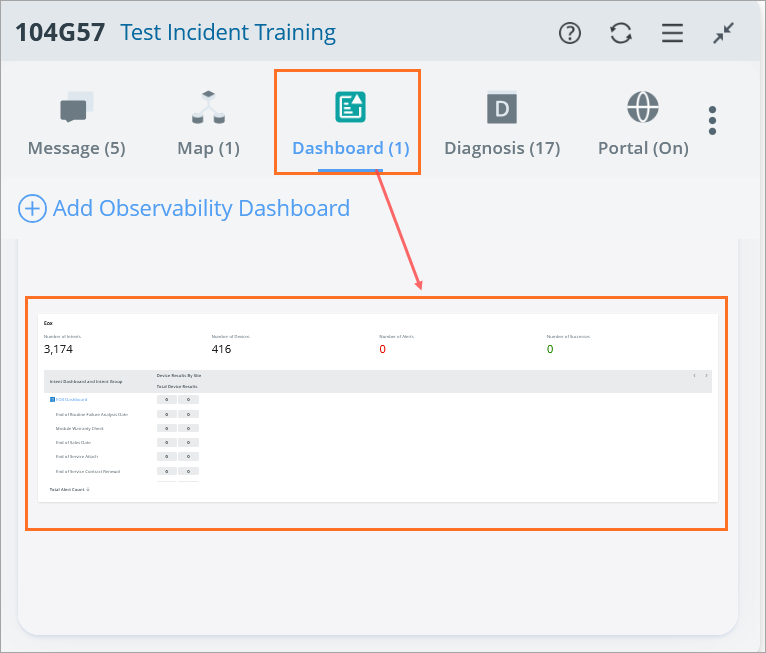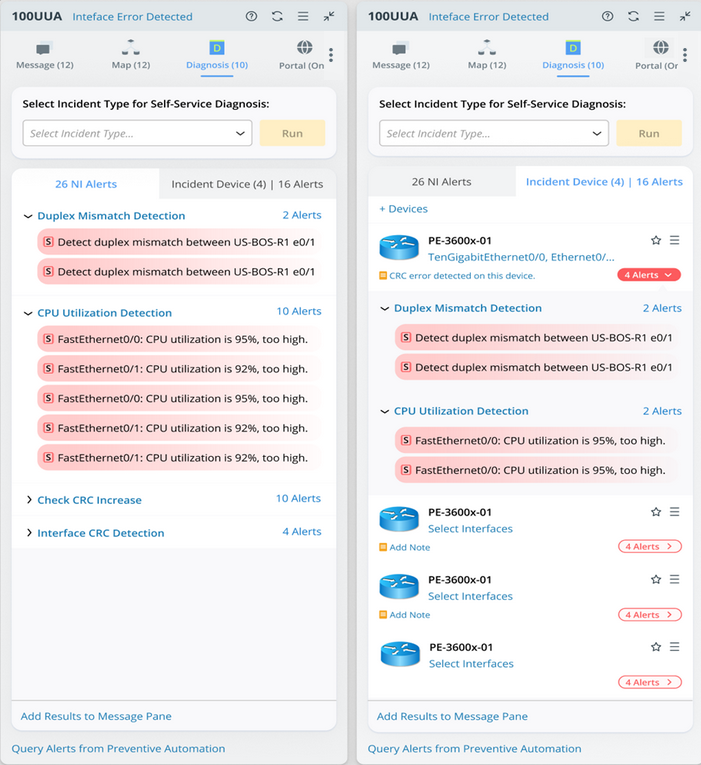Five Elements in the Incident Pane
The collaborative session of an incident portal consists of the four elements like the web incident pane. However, an incident portal does not include all the capabilities of a web incident.
The following sections will describe the functionalities of the four elements in the incident portal.
Messages Tab
As a major element for collaboration and interaction in an incident portal, the Messages tab enables portal users to exchange messages, share various contents, and view important messages pinned on the top by the NetworkBrain users of the Incident. The portal users control what messages are displayed in the incident portal (see Message Settings for details).
The incident portal supports four advanced actions for posting messages: rich text, mention user, attachment, and URL link. The behavior of each action is the same as the Incident Pane of the NetworkBrain system.

|
Note: The map links, runbook links, and device data links on the incident portal are view-only and are not hyperlinks. |
You can point to a message posted by yourself and perform the following actions on the message.
- Mark message: You can mark the message with the color icons to indicate its priority.
- Edit message: The edited message will be labeled Edited.
- Delete message: You can delete the message by clicking the
 icon.
icon.
Maps Tab
Maps added to the Incident can be displayed in the maps pane. You can switch maps by clicking Open on the map to be displayed. Note that the maps in the map pane of the incident portal are view-only, but you can move the devices in the map, zoom in and zoom out by setting the zoom level. Portal users cannot add new maps or remove maps in the incident portal.
Dashboard Tab
Triggered Automation is essential to Dashboard functionality, as each TAF-triggered incident is associated with a corresponding triggered intent dashboard (if defined in the Triggered Automation Manager).
Diagnosis Tab
On the Diagnosis tab, you can run the diagnosis and view the output of the diagnosis. However, the portal owner determines the scope of diagnoses that can be run in the incident portal. See Self-Service Diagnosis Selection for more information.

Portal Tab
You are allowed to customize the incident portal in the incident pane and control what is visible inside the Incident portal. In addition, the portal function is intuitively presented in the incident pane to encourage users to use it for collaborative troubleshooting.
